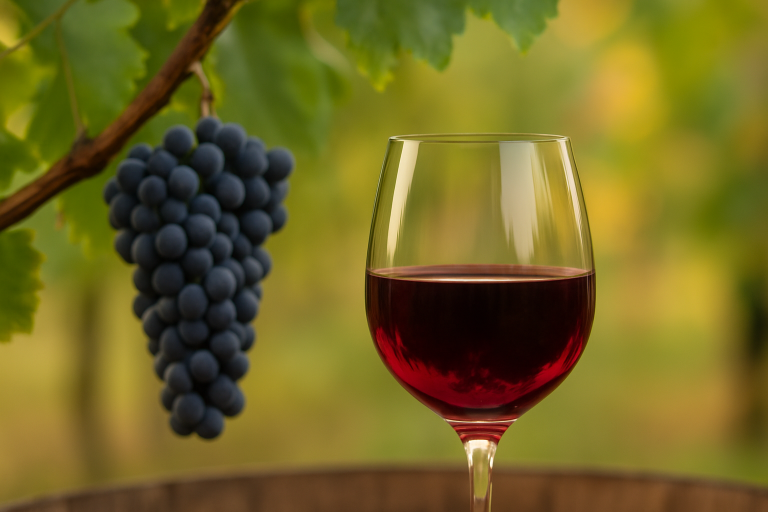Fragrant, light, and effortlessly charming, Cinsault (also spelled Cinsaut) is one of the Mediterranean’s most enduring grapes — beloved for its supple texture, floral aromas, and easy drinkability. Often found in the background of famous blends, Cinsault is finally stepping into the spotlight as winemakers around the world rediscover its grace, balance, and joyful personality.
A Brief History
Cinsault’s roots trace back centuries to the southern coast of France, most likely originating in Languedoc or Provence. The name derives from the old Provençal word sinsau, meaning “sensible” or “prudent” — a fitting description for a grape known for its reliability and poise.
Historically, Cinsault was prized for its drought resistance and consistent yields, thriving in the Mediterranean heat where more delicate varieties struggled. It became a cornerstone of Southern Rhône and Languedoc blends, often adding softness and perfume to otherwise tannic wines.
Cinsault’s influence, however, extends far beyond France. In the early 20th century, it was introduced to South Africa, where it gained a second life under the local name Hermitage. There, it became the parent (alongside Pinot Noir) of Pinotage, South Africa’s signature red grape.
In recent decades, Cinsault has experienced a quiet renaissance — embraced by winemakers who value its ability to produce vibrant, aromatic, and food-friendly wines, both as a blend component and as a varietal wine in its own right.
Where It’s Grown
Cinsault thrives in warm, sun-drenched climates with dry summers and poor soils — conditions that allow its delicate character to shine.
- France: Found throughout Provence, Languedoc, and the Southern Rhône, where it contributes to red and rosé blends, including the region’s iconic Provence rosé.
- Lebanon: Particularly in the Bekaa Valley, where it adds softness and fragrance to blends alongside Cabernet Sauvignon and Syrah.
- South Africa: Long valued for its fruit purity, often made as a light, juicy red or used in blends.
- Chile & California: Increasingly popular among natural wine producers seeking approachable, low-tannin reds with freshness and charm.
Cinsault’s global adaptability has helped it flourish wherever the sun warms rocky, well-drained soils.
Tasting Notes
Cinsault is typically light to medium-bodied, with low tannins, bright acidity, and an aromatic bouquet that leaps from the glass. Expect aromas of strawberry, raspberry, and red cherry, often accented by violet, rose petal, and white pepper.
On the palate, it’s soft and silky, offering flavors of fresh red fruit, subtle herbs, and gentle spice. Some versions show a faint savory edge — a nod to its Mediterranean origins. Oak aging is rare, allowing its purity and perfume to take center stage.
Cinsault’s delicate structure makes it ideal for serving slightly chilled (around 55°F), and it pairs beautifully with grilled vegetables, roasted chicken, charcuterie, Mediterranean salads, and seafood-based dishes. In rosé form, it’s crisp, refreshing, and elegantly floral — a true expression of southern France’s sunlit lifestyle.
The Essence of Cinsault
Cinsault is proof that elegance doesn’t have to shout. It’s a wine of quiet confidence — unpretentious, balanced, and effortlessly pleasurable.
Whether enjoyed as a red, rosé, or in a classic Rhône blend, Cinsault captures the spirit of the Mediterranean: warm, welcoming, and endlessly drinkable. It’s the perfect choice for those who appreciate wines that combine freshness with finesse — and joy with every sip.







